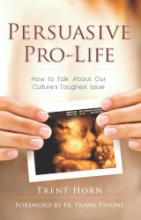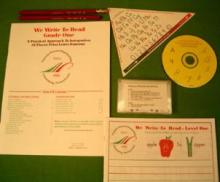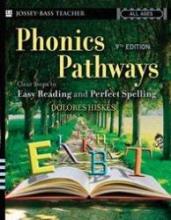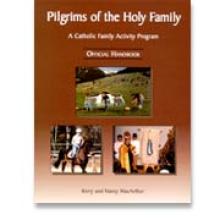No name
Persuasive Pro Life
In Persuasive Pro-Life, Trent Horn draws from his extensive experience as both a pro-life advocate and trainer of other advocates to teach us how to be effective advocates for life wherever God has placed us. He covers what to say and how to say it, dos and don'ts, and specific strategies that can effectively persuade. He also shares mistakes he's made and what he's learned from them, which both allows us to benefit from his errors as well as points to the right attitude toward our own inevitable mistakes.
The publisher describes Horn's book this way:
"Are you scared to talk about abortion? Don't worry—almost everyone is. Either we think the subject is too impolite, or we don't want to be branded an [sic] intolerant fanatic, or we're afraid we won't represent the pro-life side well enough. Whatever the reason for this fear, it causes many of us pass up opportunities to speak out on behalf of the unborn. You can overcome this fear, says Trent Horn in his new book Persuasive Pro-Life. With a little knowledge and a few proven techniques, you can become a bold and effective apologist for life."
His favorite approach is to use questions to spark a dialogue or invite deeper thought, much as Jesus or Socrates did. He especially recommends asking what he calls "dumb" questions, such as:
- What is abortion?
- What is a child?
- What is a human?
- Why is abortion a sad or difficult choice?
Horn also covers - rather encyclopedically - arguments for abortion, why they fail, and how to respond. One of the best features is the many realistic conversations he includes, based on his past experiences. These dialogues show how his approach plays out in real life and help the reader to apply the principles in various circumstances.
He doesn't shy away from the most difficult objections, which may be emotional rather than logical. I particularly loved the part where he discusses the inconsistency of the "tolerant" position held by people who say they are pro-life themselves but at the same time say that others should still have the right to choose abortion.
I recommend this excellent book and give all my students a copy of it at the end of my high school seminar class on philosophy, ethics, and life issues.
Peterson Directed Handwriting
Most of the booklets are stapled softcover, with the exception of the Preschool / Kindergarten ABC - 123 book, which is spiralbound.
Philomena
Short chapter book with numerous black and white illustrations.
Phonics Pathways
Piece = Part = Portion
There are lots of fraction books for kids out there with photos of every conceivable flavor of... Pizza. This book has the fractions, it has pizza, but thankfully it does not stop there! It provides a progression of various portions to a sliced—but intact—pizza representing the whole (1/1 = 1 = 100%). The connections it makes between the fractional part and its decimal and percentage representations is what makes it different, and useful. My kids have had a difficult time making this connection at home, perhaps because their own homeschool teacher suffers from the same ailment? In any event Piece = Part = Portion, as my husband happily agrees, does this job well.
One page shows one egg in a egg carton: the facing pages says "1/12 of a dozen eggs, .09, 8 %". The next pages shows a girl in a soccer uniform and ten other soccer shirts around her: "1/11 of a soccer team, .09, 9%". Clean, uncluttered pages, nice photos of everyday things, effective results: a good Math aid for your homeschool!
Pilgrims of the Holy Family
This program encourages children to learn about themselves and their world while imparting Catholic ideals. Pilgrims of the Holy Family is well suited to be used by individuals or in a group setting as an alternative to secular scouting programs. Written by a homeschooling family of five, "Pilgrims" presents 75 enrichment activities each of which allows the child to achieve a degree of mastery in a particular topic. Those familiar with scouting will recognize some of the topical activity sets as similar to scouting badges. Catholic Heritage Curricula has produced a beautiful set of badges to be awarded at the completion of each topic.
Each topic set is paired with a saint and includes a brief biography along with a list of 5-10 actives that must be done in order for the child to have achieved mastery of that topic. For example "Citizenship" is paired with St. Paul and includes activities such as discussing the difference between loyalty to family, community and the Catholic Church and reporting on five types of government that can be found in history. Topics range from American History and Botany to Reading and Wilderness Survival. Topic areas unique to the Catholic faith include: Catholic Social Thought, Charity, Church History, Missions, Prayer, Virtues, Vocations. There is an appendix at the end of the book that lists appropriate reading material for each of the 75 topic areas.
The authors recommend this program for ages 10 and up. Younger children may find a few topic sets that they can complete, but to perform the work independently the majority of the topics require the cognitive maturity of a child who is at least 10 if not older. We plan on continuing to use this program for after school activities and during summer break throughout high school.
Those interested in support from the authors and others using the program can sign up for the yahoogroups e-mail list.
Pippo the Fool
I heard this story long ago... most certainly from my story-telling aunt, who had the power to do exactly what this phenomenal books does: to turn real life stories into a delightful tale for children! But while my good auntie illustrated her stories with words in a way only she could do, this new publication is illustrated by lines and color in a way that will captivate young and old alike. One would be reminded of Tomie De Paola, but a Tomie de Paola turned-to-life with much more realistic, rich-in-detail full page spreads.
The story is one of big dreams, inventiveness,  and great doses of courage and perseverance. Half a millennium ago in Florence, the great cathedral of Santa Maria del Fiore was all built, but for the dome... and a contest was announced for the building of an architectural feat never done before. Little Pippo, called the fool by the people, a goldsmith, dreamed of a plan... and had to undergo quite a bit to accomplish it!
and great doses of courage and perseverance. Half a millennium ago in Florence, the great cathedral of Santa Maria del Fiore was all built, but for the dome... and a contest was announced for the building of an architectural feat never done before. Little Pippo, called the fool by the people, a goldsmith, dreamed of a plan... and had to undergo quite a bit to accomplish it!
 Pictures books are such integral part of our family life... and books such as Pippo the Fool come to entertain, to educate and to delight. Hats off to writer and illustrator. Do not miss this gem!
Pictures books are such integral part of our family life... and books such as Pippo the Fool come to entertain, to educate and to delight. Hats off to writer and illustrator. Do not miss this gem!
Plant Secrets
I confess I have a stack of books here waiting... some about libraries under different themes. Alas, the warmth today brings our minds to travel towards a green world, full of sunshine and growth.
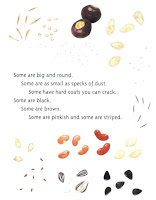
That, coupled with my 4th grader exclaiming, "Mom, you should blog about this nice book!" has me posting this gem found at the library under new books just yesterday! She is an avid picture book reader and her enthusiasm for this colorful, plant-full book alone is a thumbs up for me!
Product description:
Plants come in all shapes and sizes, but they go through the same stages as they grow. Using four common plants, young readers learn about a plant's life cycles. Simple text and colorful illustrations show the major phases of plant growth: seed, plant, flower, and fruit. Back matter offers more information on each plant, as well as on each stage of growth.
Planting the Trees of Kenya
When I was doing my research for this year's library tree project, I spent a bunch of time at a local bookstore, checking out great new children's titles. Easily my favorite (which it turns out the library had already purchased) was Planting the Trees of Kenya: The Story of Wangari Maathai by Claire A. Nivola.
It's a lovely true story about a lady from Kenya who won the Nobel Peace prize for helping her country recover its economic security by starting a movement to replant the trees and small farms and gardens that had helped the country prosper in the past, but that had been cut down to make way for larger commercial farming (which had devastated the economy).
The thing that had struck me about the book on this first read-through was the beautiful sense of order and dignity - the importance of stewardship of nature, the use of the people themselves as important resources in solving problems, the simplicity of remembering that one person can really make a substantial change, the need for perseverance even when things aren't easy right away. Basically: we change ourselves to change the world. It also has lovely small-is-beautiful and principle-of-subsidiarity sort of themes in it.
The thing I had forgotten was a detail about the years that Wangari had spent in America - where she went to college and majored in biology. I had completely forgotten that she went to a Catholic college (even though the campus picture is portrayed with nuns in habits walking around!). There is a lovely indication in the story that their philosophical influence had a significant impact on her story (and is of course an essential part of the story that her background in biology helped prepare her for her good work):
Her heart was filled with the beauty of her native Kenya when she left to attend a college run by Benedictine nuns in America, far, far from her home. There she studied biology, the science of living things. It was an inspiring time for Wangari. The students in America in those years dreamed of making the world better. The nuns, too, taught Wangari to think not just of herself but of the world beyond herself.
How eagerly she returned to Kenya! How full of hope and of all that she had learned!
The story (and the book) is SO right and so beautiful in so many ways. It's a book anyone could love.
The unexpected discovery I made when I read the "Author's Note" in the back of the book was that the college Wangari attended in the United States was Benedictine College in Atchinson, Kansas!

